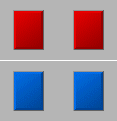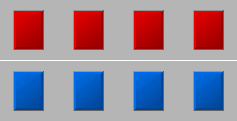Essential Guide to Uniforms and Galactic Nations
Posted: Sun Mar 09, 2014 2:00 pm
Though for much of Galactic history, the Republic was considered to be civilization itself. But in truth, there were always many miniature nations within, and full-fledged powers without. Individual planets and sectors raised their own defense forces, while after the Battle of Ruusan, the Judicial forces were intended to police the Republic as a whole. With the Clone Wars centralizing military command, and the Galactic Empire formally incorporating military units within their sphere of influence into the Imperial forces, the Galaxy finally came under rule from a single government.
However, the Alliance to Restore the Republic changed that. Original Alliance units were drawn from disaffected planetary security forces and volunteers; there was little standardization or coordination in equipment, tactics, or appearances. After Operation Domino, the surviving Alliance forces were bolstered by a large influx Alderaanian forces. These idealists and freedom fighters quickly formed the majority of Alliance forces before the Destruction of Alderaan, and brought with them the distinctive Alderaanian uniforms that still occupy the public image of what an Alliance soldier or officer should look like.
The Alderaanian Mundicide changed everything. The Mon Calamari filled the void left by Tarkin's atrocities, and the standard Alliance uniform changed once again. However, there were complaints after the Battle of Endor that the Calamari-style rank badges were too difficult for other species to differentiate, and that in Old Bothan Runic, the core sigil used for flag officers translated to a decidedly vulgar obscenity. The decision was made to return to the old-style dotted shoulder markers toward the end of 39, with the full overhaul completed by mid-41.
After Endor, the Empire's fragmented warlord states often toyed with individualized uniforms and insignia patterns to set apart one satrap's forces from the its rivals'. Most of these were stamped out, sometimes with extreme prejudice, as the Empire reclaimed its territory from the warlords, though a few ideas percolated into the main Imperial uniform regulations. Most notable is the issuing of rank insignia to enlisted personnel in the form of shoulder straps, with broad silver stripes denoting general seniority, and narrower bands subdividing the specific grades of enlisted, junior non-commissioned, senior non-commissioned, and warrant officers.
There are very few fully independent planetary or sectorial militaries extant in this day and age, though there is room for other star nations to form in the midst of the Alliance of Free Planets and the Galactic Empire. As the editorial staff at Fey'kel's Essential Guides receive information on these other groups, they will be added to our codex.
However, the Alliance to Restore the Republic changed that. Original Alliance units were drawn from disaffected planetary security forces and volunteers; there was little standardization or coordination in equipment, tactics, or appearances. After Operation Domino, the surviving Alliance forces were bolstered by a large influx Alderaanian forces. These idealists and freedom fighters quickly formed the majority of Alliance forces before the Destruction of Alderaan, and brought with them the distinctive Alderaanian uniforms that still occupy the public image of what an Alliance soldier or officer should look like.
The Alderaanian Mundicide changed everything. The Mon Calamari filled the void left by Tarkin's atrocities, and the standard Alliance uniform changed once again. However, there were complaints after the Battle of Endor that the Calamari-style rank badges were too difficult for other species to differentiate, and that in Old Bothan Runic, the core sigil used for flag officers translated to a decidedly vulgar obscenity. The decision was made to return to the old-style dotted shoulder markers toward the end of 39, with the full overhaul completed by mid-41.
After Endor, the Empire's fragmented warlord states often toyed with individualized uniforms and insignia patterns to set apart one satrap's forces from the its rivals'. Most of these were stamped out, sometimes with extreme prejudice, as the Empire reclaimed its territory from the warlords, though a few ideas percolated into the main Imperial uniform regulations. Most notable is the issuing of rank insignia to enlisted personnel in the form of shoulder straps, with broad silver stripes denoting general seniority, and narrower bands subdividing the specific grades of enlisted, junior non-commissioned, senior non-commissioned, and warrant officers.
There are very few fully independent planetary or sectorial militaries extant in this day and age, though there is room for other star nations to form in the midst of the Alliance of Free Planets and the Galactic Empire. As the editorial staff at Fey'kel's Essential Guides receive information on these other groups, they will be added to our codex.







































































































